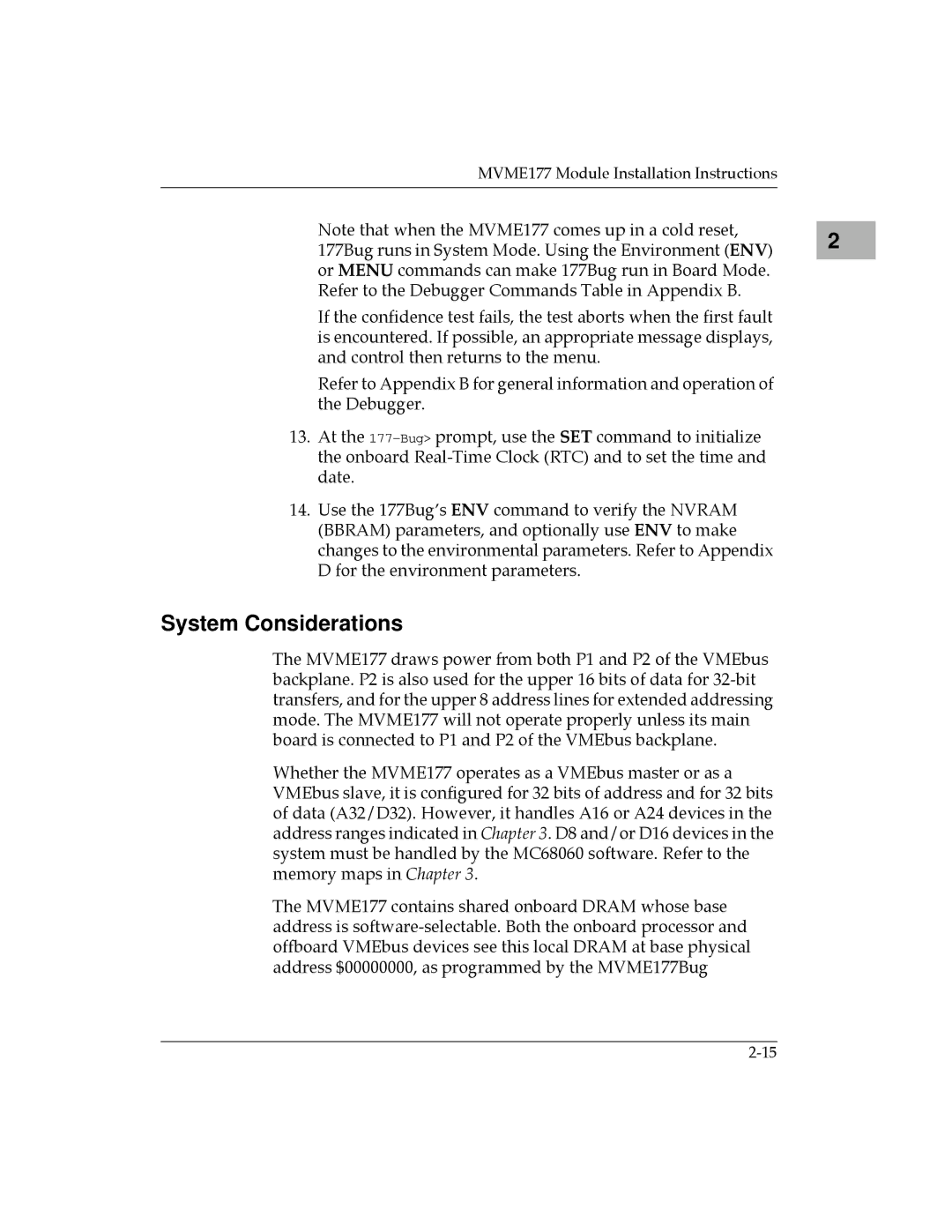
MVME177 Module Installation Instructions
Note that when the MVME177 comes up in a cold reset, 177Bug runs in System Mode. Using the Environment (ENV) or MENU commands can make 177Bug run in Board Mode. Refer to the Debugger Commands Table in Appendix B.
If the confidence test fails, the test aborts when the first fault is encountered. If possible, an appropriate message displays, and control then returns to the menu.
Refer to Appendix B for general information and operation of the Debugger.
13.At the
14.Use the 177BugÕs ENV command to verify the NVRAM (BBRAM) parameters, and optionally use ENV to make changes to the environmental parameters. Refer to Appendix D for the environment parameters.
System Considerations
The MVME177 draws power from both P1 and P2 of the VMEbus backplane. P2 is also used for the upper 16 bits of data for
Whether the MVME177 operates as a VMEbus master or as a VMEbus slave, it is configured for 32 bits of address and for 32 bits of data (A32/D32). However, it handles A16 or A24 devices in the address ranges indicated in Chapter 3. D8 and/or D16 devices in the system must be handled by the MC68060 software. Refer to the memory maps in Chapter 3.
The MVME177 contains shared onboard DRAM whose base address is
2 |
